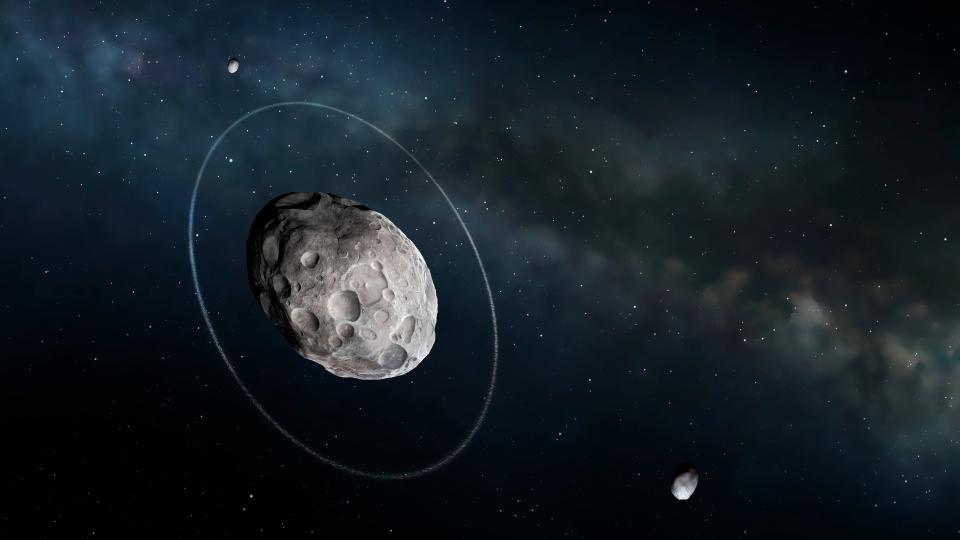See dwarf planet Haumea at its closest to Earth in 285 years tonight

If you've never heard of the dwarf planet Haumea, tonight's a pretty good night to become familiar with the football-shaped celestial body.
Located in the Kuiper Belt beyond Neptune, this frigid dwarf planet reaches both opposition (the point directly opposite the sun from the perspective of Earth) and perigee (the point in its orbit closest to Earth) tonight. And it'll be visible in the night sky in the constellation Boötes.
From New York City, per In-the-Sky.org, Haumea will become visible in the night sky at 8:49 p.m. EDT (0049 GMT on April 21) and will remain so until dawn, when the sun's light will overpower the dwarf planet. Look to the east some 24 degrees above the horizon, which will correspond to just over two widths of your fist held at arm's length.
Related: NASA seeks origin of 'weird' fast-spinning dwarf planet Haumea
Haumea was first spotted by two different groups of astronomers looking at observations made between 2003 and 2004, earning it the name 2003 EL61. Until 2008, it was classified as a Kuiper Belt Object (KBO) — a reclassification by the International Astronomical Union deemed it a dwarf planet, joining, Pluto, Eris, and Makemake in the Kuiper Belt and Ceres in the asteroid belt. At that time, it was given the name Haumea after the Hawaiian goddess of fertility.
The dwarf planet, which is roughly the size of Pluto, takes about 285 years to orbit the sun, and its distance from Earth varies from 34 to 51 astronomical units, or AU (one AU is the distance between the Earth and the Sun). As it's reaching perigee, that puts it at a distance of 34 AU tonight.
Though its orbit might be quite slow, Haumea rotates extremely fast — it takes just four hours to complete one rotation. Because of the centrifugal force it experiences due to this rotational speed, Haumea is stretched out like a football instead of round like most other planets and dwarf planets. Haumea is also the only known dwarf planet to have rings, and it also has two small moons, Namaka and Hi'iaka, which are the daughters of Haumea in Hawaiian mythology.
If you'd like to get a closer look at Haumea, dive into our guides to the best telescopes and best binoculars. And if you'd like to photograph the night sky while you're stargazing, our guides to the best cameras for astrophotography and best lenses for astrophotography might be helpful.
Editor's Note: If you take an image of Haumea at opposition and would like to share it with Space.com's readers, send your photo(s), comments, and your name and location to spacephotos@space.com.
Follow Stefanie Waldek on Twitter @StefanieWaldek. Follow us on Twitter @Spacedotcom and on Facebook.

 money
money 